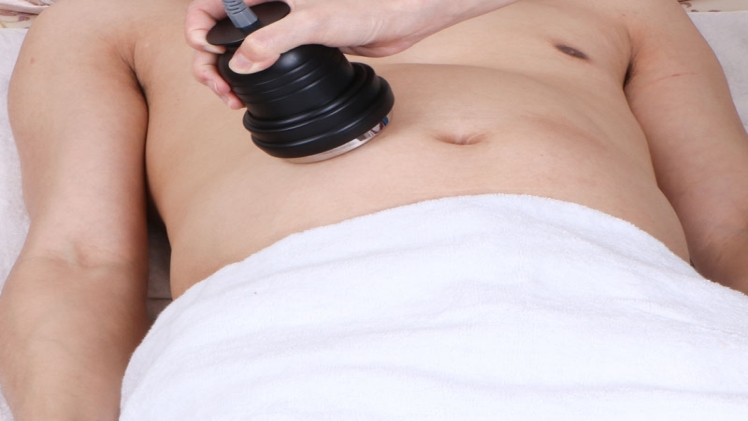If you want to get rid of stubborn fat deposits, you can utilize ultrasound cavitation or ultrasonic cavitation. Liposuction is said to be replaced by this procedure as a more effective and less intrusive option.
Even though this operation carries a low level of risk, it does not exclude the possibility of adverse effects.Short-term side effects, including bruising and soreness, are frequent, and some people may experience loose skin or dimples and waves in their skin as they heal.Ultrasonic cavitation is touted as a highly convenient procedure due to its quick recovery and lack of adverse effects.
Finding and talking with a certified, skilled provider with prior experience performing the treatment could be the most time-consuming process.
It’s essential to understand how ultrasonic cavitation works.
- Breaking down fat cells with ultrasound technology is the primary goal of ultrasonic cavitation machine.
- Ultrasound waves penetrate deep into your skin, generating a jarring sensation that disturbs your sleep. The fat cells then break away from one other and fall off of your skin.
- After a few days, your lymphatic system breaks down the fat cells and flushes them out of your body as waste.
- However, recent studies have shown encouraging results for this medication.
- To see how well ultrasonic cavitation worked, fifty medically obese ladies were put through rigorous testing by Trusted Source.
- Both groups followed a low-calorie diet, but only one group received radiofrequency and ultrasound body sculpting treatments in addition to the diet.
- Body fat mass decreased in the ladies who received ultrasonic cavitation for five weeks. This group didn’t shed more pounds than the other one—they merely shed more fat.
Effectiveness
More clinical trials are required to determine the exact effectiveness of this medication.As a less invasive alternative to surgical liposuction, we have some data from trials supporting ultrasonic cavitation.
What is the treatment using ultrasonic cavitation in stomach?
An ultrasonic body contouring procedure, ultrasonic cavitation (also known as ultrasonic lipolysis), removes fat deposits beneath the skin. Brand names like Liponix or Ultrashape can also be used to describe it.
This is a less invasive surgery than a more invasive one, such as liposuction. In this procedure, fat cells are broken apart using ultrasonic radio waves and subsequently absorbed into the body via the lymphatic system.
In contrast to other similar procedures such as ultrasound liposuction, ultrasonic cavitation does not require any surgical incisions. As a result, healing will be more straightforward. As a result, the impact of the outcomes may be less noticeable.
The optimal candidate for ultrasonic cavitation is someone with the following characteristics:
- In good health, does not smoke, and is already 15 pounds away from their ideal weight.
- Ultrasonic cavitation is a fat-reduction technique that uses high-frequency sound waves to break up fat cells. A lot of weight loss isn’t a goal for this treatment.
- Ultrasound cavitation’s effectiveness is still up for debate. Evidence points to this being a successful procedure for slimming down and toning up the midsection.
- Read on for all the details you’ll need to make an informed decision about getting this surgery performed on yourself.
What is the price of ultrasonic cavitation, exactly?
Ultrasonic cavitation is regarded as a purely discretionary form of aesthetic surgery. That implies you’ll be on the hook for the entire cost of the therapy and any related expenses. Ultrasound cavitation, a technique used in body shaping, is often not covered by health insurance.
The average price can vary greatly and is influenced by:
- what kind of treatment equipment is being utilized
- your healthcare provider’s level of expertise and the number of treatments you require
Nonsurgical fat reduction treatments cost, on average, $1,300.Besides your doctor’s fee, this treatment is relatively inexpensive. Most of the time, no anesthetic is needed.Many people are drawn to ultrasonic cavitation because of how quickly they may recuperate after using it.
Your visit can usually be completed in less than an hour if you choose to have this procedure done during your lunch break. After the procedure, you can get behind the wheel and go back to work right away.

